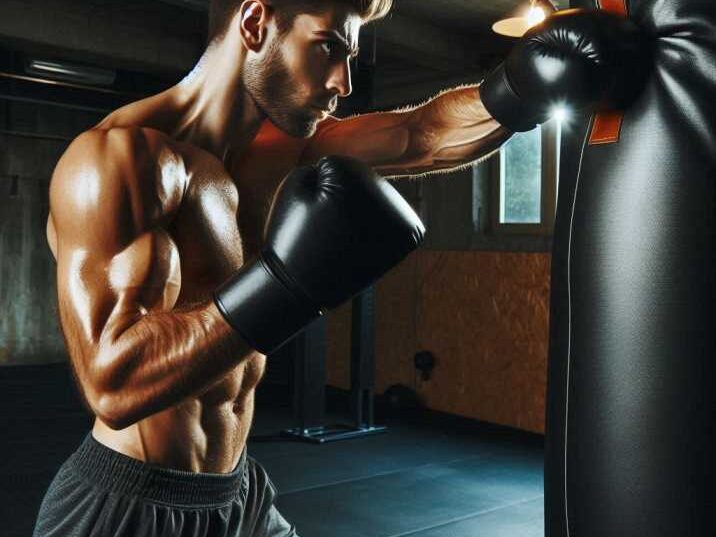Kickboxing is more than just a fun way to stay active – it’s a powerful workout that strengthens many different muscles in your body! When you punch, kick, and move in a kickboxing session, your body gets stronger in ways you might not expect. In this article, we’ll dive deep into which muscles kickboxing works and how it helps make your body stronger.
Kickboxing can help you in school, sports, and other activities by improving your focus and discipline. When your muscles are stronger, you feel more confident and ready to take on new challenges. Ready to find out more? Let’s start!

Introduction to Kickboxing and Muscle Workouts
Table of Contents
Kickboxing is a combination of boxing, martial arts, and fast-paced cardio. Each kick, punch, and movement targets specific muscles in your body, helping you grow stronger. It’s a total-body workout that improves both your strength and endurance.
When you do kickboxing, you’re not just moving your arms and legs – you’re also using your core, back, and even your heart! Kickboxing engages multiple muscle groups, which makes it one of the most effective ways to train. Whether you’re new to kickboxing or have already tried it, learning about the muscles it works can help you maximize your training!
Which Muscles Kickboxing Works?
Kickboxing is a full-body workout, so it works many muscles, from your head down to your toes. Here’s a breakdown of the key muscles that benefit from kickboxing:
1. Core Muscles
Your core muscles include your abs, obliques (the muscles on the sides of your body), and lower back. These muscles are essential for stabilizing your body during kicks, punches, and movements. Every time you throw a punch or kick, your core is working to keep balanced and powerful.
Why it’s Important:
- Stronger core muscles help with better balance and stability.
- Having a strong core makes it easier to perform daily activities like walking, running, or carrying heavy objects.
Core Exercises in Kickboxing:
- Punching drills
- Kicking routines
- Plank punches
2. Leg Muscles
Kickboxing involves a lot of kicks, which means your legs are always engaged. The main leg muscles worked in kickboxing include the quads (the front part of your thighs), hamstrings (the back of your thighs), and calves. Kicking motions require strength and flexibility, which helps your leg muscles become stronger and more toned.
Why it’s Important:
- Strong leg muscles give you more power and endurance during workouts.
- They help you move faster and jump higher.
Leg Exercises in Kickboxing:
- Roundhouse kicks
- Front kicks
- Knee strikes
3. Arm and Shoulder Muscles
Throwing punches works out your arms and shoulders. The biceps, triceps, and deltoids are constantly working as you throw jabs, hooks, and uppercuts. Not only do you build muscle strength, but kickboxing also tones your arms, making them leaner and stronger.
Why it’s Important:
- Building strength in your arms and shoulders improves your punching power and helps you lift things more easily.
- It enhances your coordination and agility.
Arm and Shoulder Exercises in Kickboxing:
- Jab-cross combinations
- Hook punches
- Speed bag drills
4. Back Muscles
Your back muscles, especially the latissimus dorsi (lats) and trapezius (traps), are engaged every time you throw a punch or twist your body during a kick. The back muscles work together with your core to keep your movements smooth and powerful.
Why it’s Important:
- Strong back muscles help you maintain good posture and prevent injury.
- They make it easier to carry heavy things and move your body with control.
Back Exercises in Kickboxing:
- Uppercuts
- Defensive twists
- Cross punches
5. Cardiovascular System (Heart Muscle)
While not technically a skeletal muscle, your heart is perhaps the most important muscle that gets a workout during kickboxing. Because it’s a high-intensity, cardio-based activity, kickboxing helps strengthen your heart, improving your cardiovascular endurance.
Why it’s Important:
- A strong heart pumps blood more efficiently, giving you more energy and stamina.
- It helps reduce the risk of heart disease and keeps your body healthy.
Cardio Exercises in Kickboxing:
- Jumping rope
- Burpees
- High-knee drills
How Kickboxing Improves Focus and Discipline
Besides building muscles, kickboxing also sharpens your mind. Concentration is a key part of every training session. Whether you’re learning a new combination or reacting to an opponent’s move, focus is essential. Over time, this ability to concentrate can help you improve focus in school or when working on hobbies.
Kickboxing also teaches discipline. Repeating moves, improving techniques, and sticking to a workout routine help develop self-discipline. This skill can make a big difference in your everyday life, especially when facing challenges.
Benefits of Strengthening Multiple Muscles with Kickboxing
- Increased Overall Strength: Because you’re working so many different muscles, you’ll notice overall improvements in your strength.
- Better Balance and Coordination: Stronger muscles help you move more gracefully and with better control.
- Weight Loss and Fitness: The combination of cardio and strength training makes kickboxing an excellent way to stay fit and burn calories.
- Mental Clarity: Kickboxing helps reduce stress and improve focus by engaging both your body and mind.

Table of Kickboxing and Muscle Workouts
| Muscle Group | Primary Exercises | Benefits |
|---|---|---|
| Core | Punching, Kicking, Twisting | Improves balance and stability |
| Legs (Quads, Hamstrings, Calves) | Kicking, Knee Strikes, Footwork | Increases power, strength, and flexibility |
| Arms and Shoulders | Jab, Cross, Uppercuts, Hooks | Tones arms, builds punching power |
| Back | Twisting, Defensive Moves, Punches | Improves posture and strength |
| Heart (Cardiovascular) | Jumping Rope, High-intensity Combos | Boosts endurance and overall fitness |
Conclusion: Kickboxing and Muscle Workouts
Kickboxing is a powerful workout that engages multiple muscles all at once. By working your core, legs, arms, back, and heart, you’ll become stronger, fitter, and more disciplined. Plus, it’s a great way to relieve stress and improve your focus.
Whether you’re a beginner or experienced, kickboxing offers many benefits that extend beyond the gym. With regular practice, you’ll see improvements in your strength, flexibility, and overall health.
Frequently Asked Questions (FAQs)
1. Does kickboxing build muscle?
Yes, kickboxing helps build and tone muscles throughout your body, especially in your core, legs, arms, and back.
2. How often should I do kickboxing to see results?
For best results, aim to practice kickboxing 2-3 times per week. Consistency is key!
3. Can kids do kickboxing?
Yes! Kickboxing is great for kids and helps improve focus, coordination, and confidence.
4. Do I need equipment for kickboxing?
You don’t need much – just gloves, a punching bag, and space to move around.
5. Is kickboxing a good cardio workout?
Definitely! Kickboxing is an excellent cardio workout that strengthens your heart and helps burn calories.


